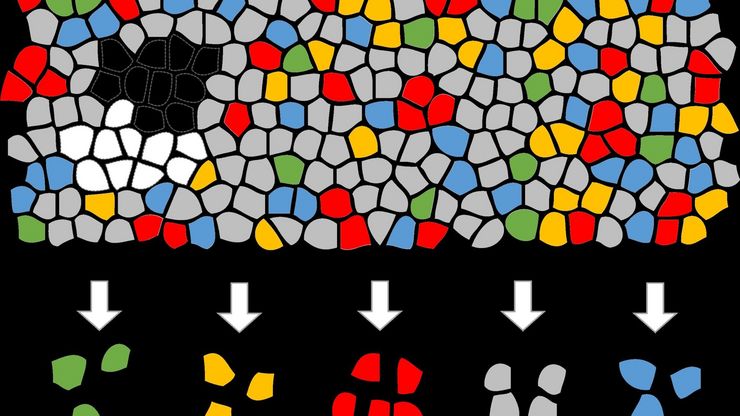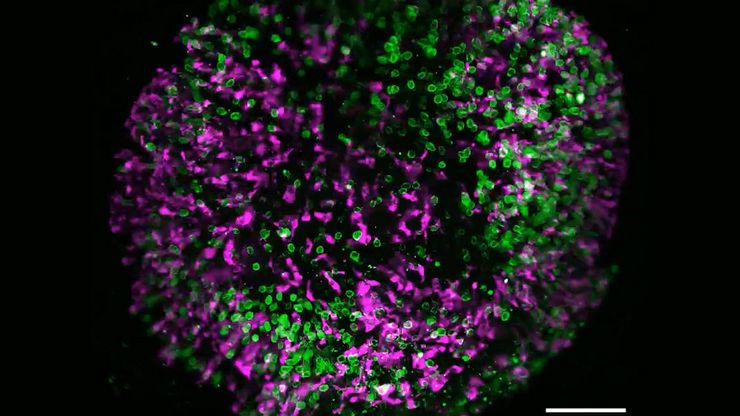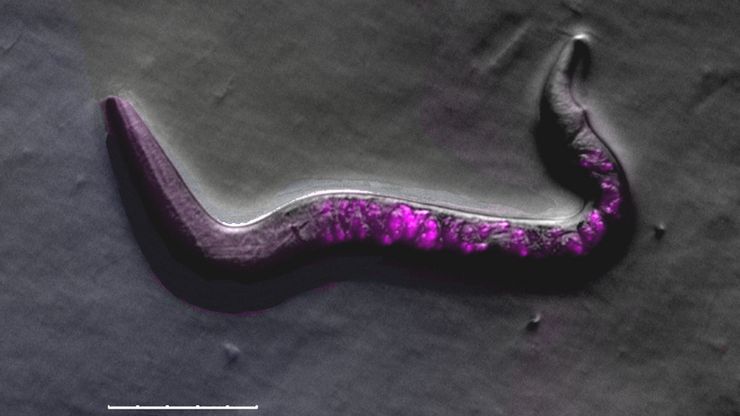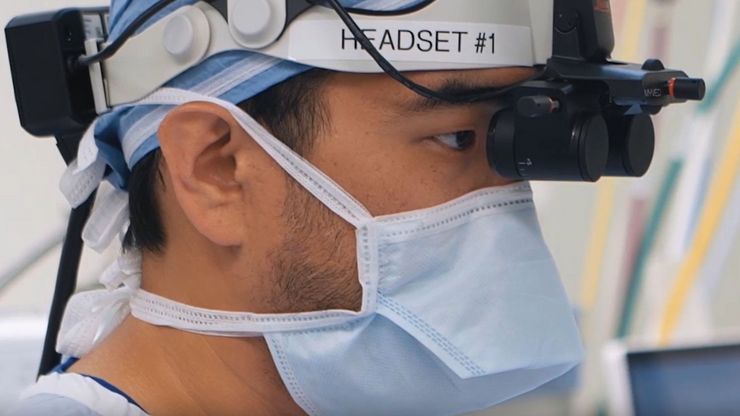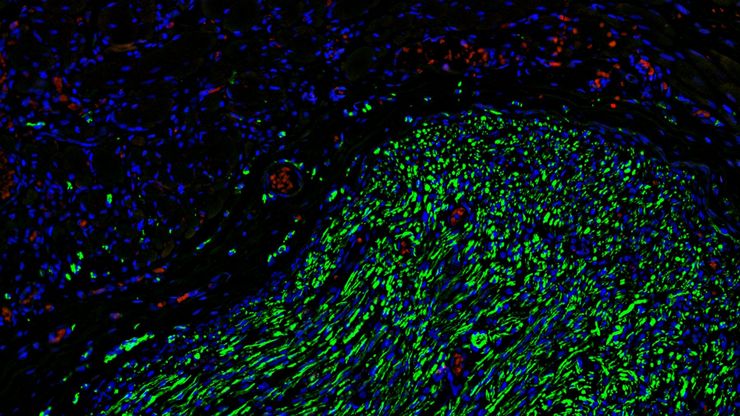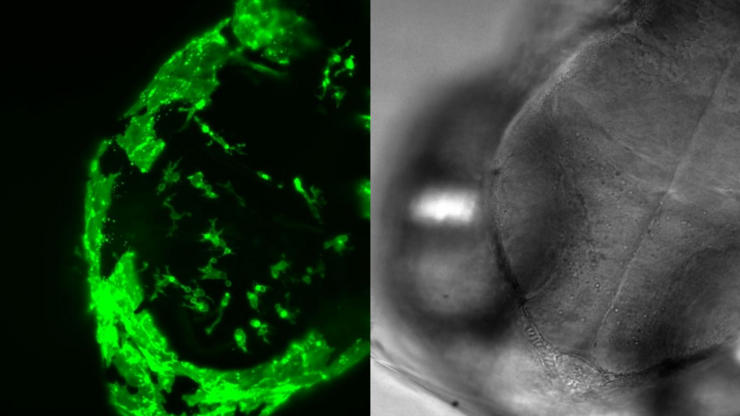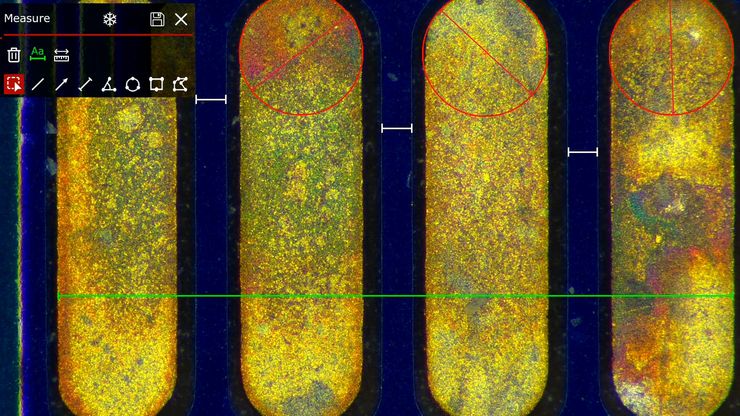Inverted Light Microscopes
Inverted microscopes from Leica Microsystems are designed to meet the rigorous demands of life science as well as material science and industrial applications.
Inverted microscopes for life sciences
Cutting-edge life science research requires advanced imaging solutions for a variety of applications, such as live cell or tissue culture. Leica inverted microscopes offer you high performance to help you advance your research. The easy-to-use software, high-resolution digital cameras, and very good LED illumination make the inverted microscopes flexible for your laboratory needs.
Inverted microscopes for materials science and manufacturing
Perform materials inspection and analysis quickly and efficiently with Leica modular inverted microscopes. High-performance optics, intuitive controls, and easy-to-use software minimizes the need for extensive training and allows you to work efficiently.
Contact us for expert advice on the right inverted microscope for your needs and budget.
What is your application?
Determining the most appropriate inverted microscope for your needs depends on your application. Some inverted compound microscopes and inverted fluorescence microscopes meet the demands of specific applications better than others. The modular design of Leica inverted microscopes enables a customized solution to be set up for a specific application.
Which type of samples do you need to visualize?
The optical resolution, contrast, and image quality you need are provided by Leica inverted microscope solutions, no matter if you are observing samples for life science research, such as cells or tissues or materials production and analysis. Additionally, inverted microscope accessories, such as objectives, illumination, and digital cameras, along with the Leica Application Suite software, can further customize and optimize the solution for your specific application needs.
What about the budget for an inverted microscope?
Customized inverted microscopes can have higher costs, but they enable you to increase productivity. An inverted microscope can be optimized for almost any application due to a large variety of parts and accessories.
What is the difference between an inverted versus an upright microscope? Does an inverted microscope offer any advantages?
For an inverted microscope, the objectives are below the stage and the sample is placed above the objectives. It is the opposite for an upright microscope. With an inverted microscope:
- You have more freedom than with an upright one. As the sample is above the objective, you have greater working distances and can image large and heavy samples.
- It is easier to observe cell and tissue cultures with an inverted microscope, because cells sink or stick to the bottom of the transparent dish or flask (filled with an aqueous solution). It is more difficult to see a lot from above with an upright microscope, as water immersion objectives would be necessary.
- You can look at more samples in a shorter period of time. You simply place your sample on the stage, focus on the surface once, and image it. The focus remains the same for all further samples.
- There is much less risk of crashing an objective into the sample. As the objectives are below the stage, this fact helps reduce considerably the risk of crashing the objective into your sample.
- You save time and money in sample preparation. Only one side of the sample needs to be prepared and large samples can be more easily imaged.
For more information, please refer to the Science Lab article:
Five Advantages of Inverted Over Upright Microscopes in Industrial Applications
related articles
Frequently Asked Questions Inverted Microscopes
With inverted microscopes, you look at samples from below, because their optics are placed under the sample stage. This fact is the opposite of upright microscopes where you look at samples from above. Often, inverted microscopes are used for observing cell and tissue cultures in life science research, because cells sink or stick to the bottom of a transparent dish or flask filled with an aqueous solution (growth medium) and you don’t see a lot from above. Inverted microscopes have become increasingly popular for material applications as well. For more information, please refer to the Science Lab articles:
Optical Microscopes – Some Basics
Five Advantages of Inverted Over Upright Microscopes in Industrial Applications
Leica inverted microscopes are modular and shipped in the configuration that best fits your stated needs or application. In case your needs change later, you can always upgrade your workstation by adding available accessories.
Leica Microsystems offers the free Store & Recall software (available with the LAS X software platform for industry) which allows you to customize the microscope functions, adapting them to the requirements and needs of each individual user. The software also allows you to restore all system settings saved with the acquired image.
All our encoded microscope solutions offer calibration and image comparison. Furthermore, Leica Microsystems offers the free Store & Recall software (available with the LAS X software platform for industry) which allows you to restore all system settings saved with the acquired image.
No, you don’t. By installing a FLEXACAM C1 camera, you can directly save the images on an IT network server or USB medium. You can also send the images via e-mail over your network without the need for a PC.
With the FLEXACAM C1 camera you can directly save images on an IT network server or USB medium. You can also send the images via e-mail without having to use a computer.
There are a lot of accessories. Please get in contact with your local Leica sales representative.
There are a lot of ergonomic accessories for Leica microscopes. Please contact your local Leica sales representative for more details or visit: Ergonomic Accessories for Stereo Microscopes
LAS X software only runs with Windows, but for a MAC we have a dedicated software called Leica Acquire that you could download for free from the Apple store: https://apps.apple.com/it/app/leica-acquire/id733706983?mt=12
However, there is no software for Linux.
Yes, use of a 3rd party software is possible: https://www.splashtop.com/classroom
We have adapters for all C-mount compatible cameras.



